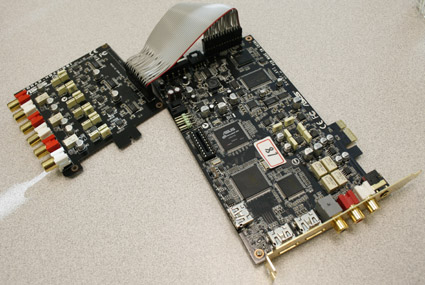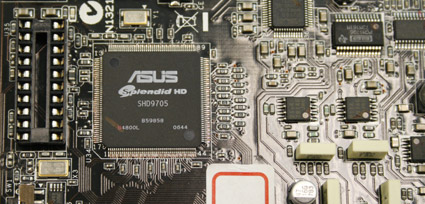Pre-CeBIT Brief: ASUS Goes HDMI Crazy! To Launch Triple HDMI Input Capture Card
Fremont (CA) - After years of Creative's dominance and players who would occasionally manage to produce a product that was relatively competitive, Taiwan giant ASUS decided to step up to sound card table.
With the news that ASUS is preparing a number of sound card products, we decided to visit ASUS'es North American HQ in Fremont (CA) and learn more about a plan to turn the sound card market upside down.
After four hours of meetings with different departments, we walked out thoroughly impressed with the effort that ASUS is putting on all fronts. But without any doubt, biggest stars were upcoming sound cards that are bound to seriously shake up the market. ASUS told TG Daily that it will introduce cards that can output and input HDMI and another card with three, yes three, HDMI ports.
Gearing up for HTPC market
Next week, all eyes of the IT world will be focused on happenings in rather boring city of Hannover, and ASUS has quite a lot of aces to show. In the world of audio cards, ASUS will enter the battle for best sound card for home theater market.
Xonar DX is a working name for effectively halved Xonar D2X. Asus told us their engineers wanted to create a feature-rich HTPC sound card that would fit inside every PCIe X1 equipped HTPC machine. We are skeptical about ASUS choice to remove the aluminum EM shielding (practically a trademark of Xonar D2 and D2X), but that probably won't hurt usability.
Manufacturer is going to bundle both half-height and full-height brackets, and both are set to be gold-plated, just like the original D2X model. Regardless of its size, ASUS kept almost all of the features from the original product, including a 4-pin floppy connector for power. As you might know, PCIe x1 slot does not give same amount of power as good old PCI slot, so ASUS had to put a power connector on the PCB.
Get Tom's Hardware's best news and in-depth reviews, straight to your inbox.
ASUS currently sides with Dolby Laboratories and DTS Corporation
The board features Dolby Digital Live and DTS Connect certificates, so it will be interesting to see will Xonar boards go for THX as well...
Given the fact that THX is no longer a prologued wing of Lucas Empire, but rather a stand-alone player on market. EAX 5.0 is supported via driver-wrap, just like original Xonar D2 and D2X - neatly bypassing all the problems that came with Windows Vista audio driver model.
World of professional sound cards gets triple-HDMI interface
The real news is a product that is currently being in development - Xonar AV1. This sound card is going to be a base for future Xonar products, and it presents a whole new chapter in the world of sound cards. Capabilities of Xonar AV1 leap ahead over consumer, prosumer and even large number of professional solutions on the market, which is something that left us pleasantly surprised.
The Xonar AV1 main card, and HDAV-DB1 daughterboard, will have more than 10 different connectors, with the most interesting ones being the three HDMI connectors (two external, single internal one). HDMI-In is going to be a game changer for all high-class computers, since video enthusiasts will be able to capture their private videos using a clean digital form.
With the price of HDMI-enabled digital camcorders now being in higher triple-digits, forcing users to pay for that feature and not being able to use it is just... conclude for yourself. ASUS Xonar AV1 is going to solve that dilemma, and we can only hope that HDMI-In and HDMI-Out connectors come to future consumer boards (Xonar D3X with HDMI connectors would be nice).
In order to get the HDMI capability, ASUS put some serious silicon on the board itself: Splendid HD is no longer a software feature, but rather a real video processing chip that will mix the sound and audio in order to produce best possible A/V mix.
Only real criticism that we can think of is the fact that ASUS uses a proprietary connector to connect the HDAV-DB1 daughterboard with the main card. While it may not pose an issue today, going couple of years down the line, users may find themselves with a defunct cable and lack of any compatible replacement. Luckily, ASUS is still polishing this product, so there is time to change.
We were not able to get the details about final product price, but it all depends on variations with the daughterboard. If ASUS comes with two products on market (just the AV1 and AV1+HDAV-DB1), it could hit some interesting price points, and then market for prosumer and entry-level professionals will be wide open.
Conclusion
With ASUS expanding its sound card line-up from a two sound cards to five (excluding USB sound chips that we did not show in this preview article), and working hard on keeping the software down in size, we can only imagine at the sound alert going on in Creative Labs HQ in Singapore. We're still without hardware to verify claims coming from Fremont office, but as it stands right now, the sound card market is going to heat up.


